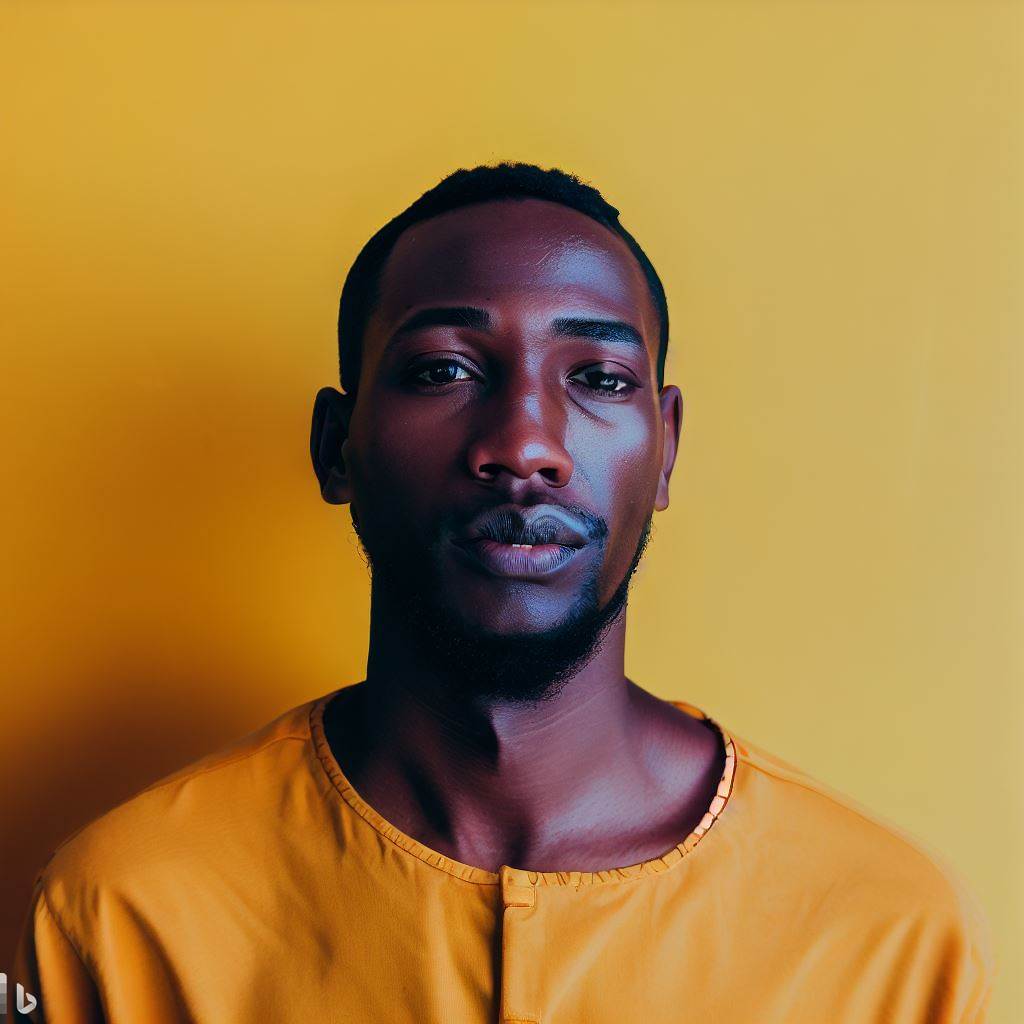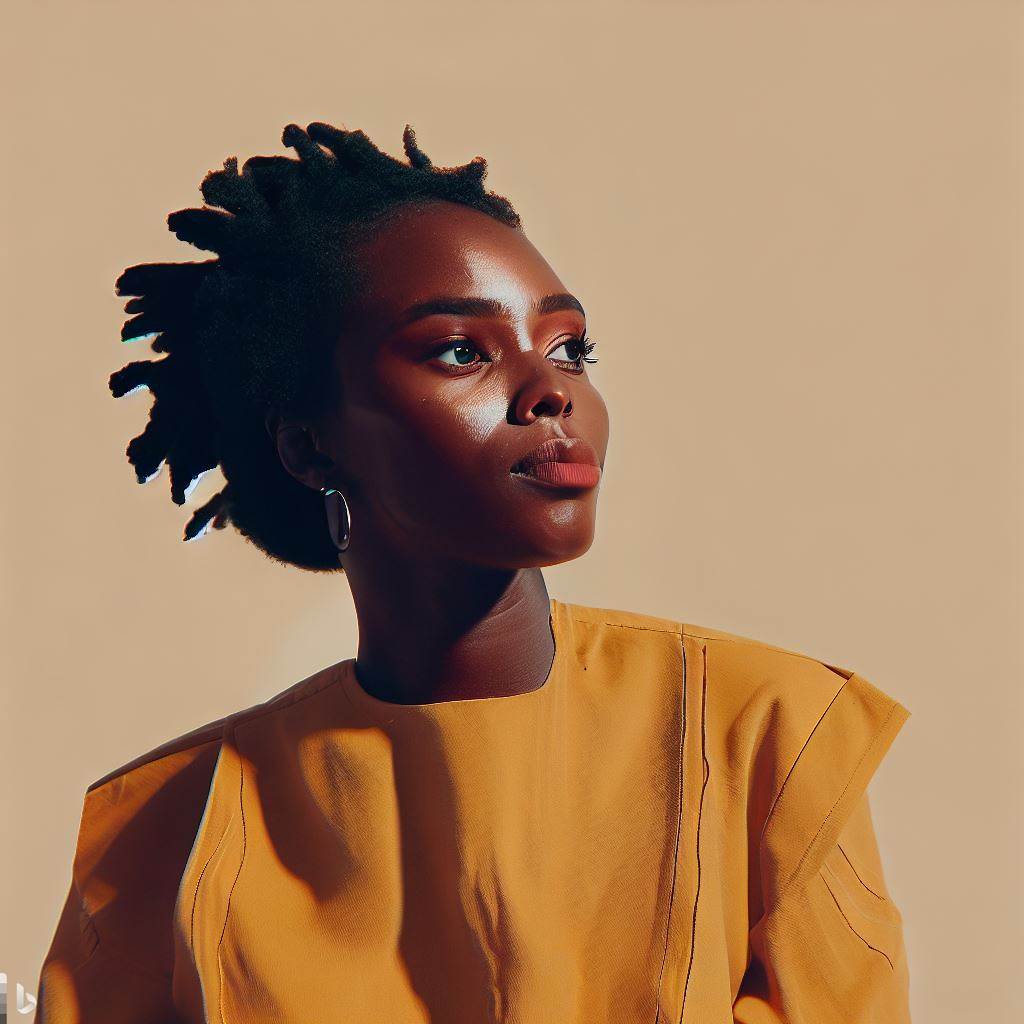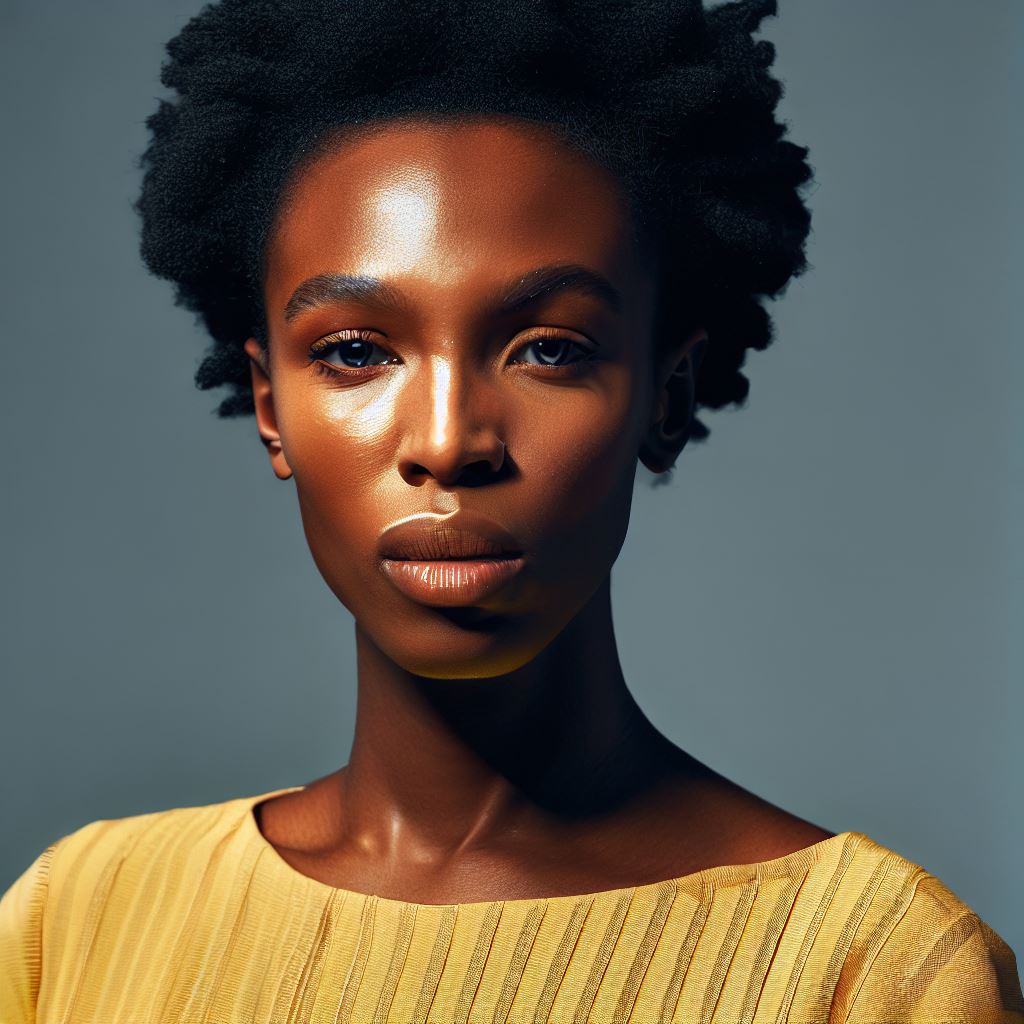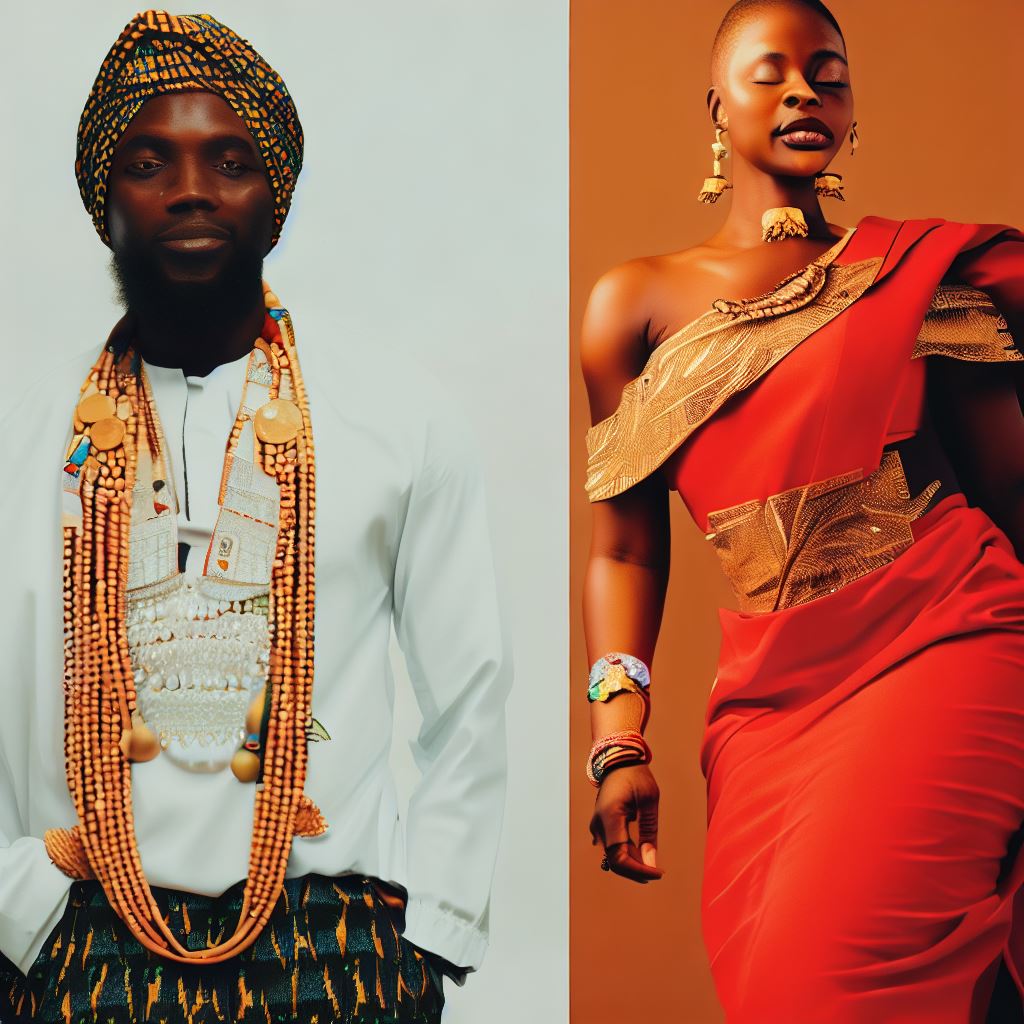Introduction
Let’s explore Costume Designing in Nigeria Film Industry.
Costume designing involves creating and selecting costumes for characters in a film.
Costume designing is crucial in the film industry as it enhances character development and storytelling.
Nigeria’s film industry, known as Nollywood, is one of the largest in the world.
- Costume designing is the art of creating clothing and accessories for characters in film productions.
- It involves selecting, designing, and crafting costumes to reflect characters’ personalities, eras, and settings.
Importance of Costume Designing in the Film Industry
- Character Development: Costumes help define characters, making them believable and relatable.
- Storytelling: Costumes convey time periods and cultural backgrounds, enriching storytelling.
- Visual Impact: Well-designed costumes enhance a film’s visual appeal and memorability.
- Setting Atmosphere: They create the mood and atmosphere of a scene.
- Cultural Authenticity: In Nigeria, costume design preserves and celebrates cultural diversity.
- Awards and Recognition: Outstanding costume design can earn accolades for a film and its designers.
- Economic Impact: The industry creates jobs and opportunities for costume designers and artisans.
Overview of Nigeria’s Film Industry (Nollywood):
- Prolific Output: Nollywood is one of the world’s largest film industries, producing numerous films annually.
- Cultural Diversity: It reflects Nigeria’s cultural richness, showcasing various ethnic traditions and languages.
- Global Influence: Nollywood has gained international recognition, influencing filmmakers worldwide.
- Low Budgets, High Creativity: Despite limited budgets, creativity thrives in Nollywood.
- Rapid Growth: Nollywood’s growth continues, attracting investment and expanding its reach.
Costume designing in Nigeria’s vibrant film industry is an art that brings characters to life, enhances storytelling, and celebrates cultural diversity.
In Nollywood, where creativity knows no bounds, costume designers play a pivotal role in crafting cinematic experiences.
Historical Background of Costume Designing in Nigeria’s Film Industry
Early development and influences
- Nigeria’s film industry, also known as Nollywood, has a rich history of costume designing.
- The early development of costume designing in Nigeria was influenced by traditional Nigerian attire.
- Indigenous Nigerian tribes played a significant role in shaping the early costume designs.
- The incorporation of traditional fabrics, colors, and patterns became a hallmark of Nigerian film costumes.
- The influence of Western fashion and Hollywood movies started to emerge in the 1960s.
Evolution of costume designing in Nigerian films
- As the Nigerian film industry grew in the 1970s and 1980s, costume designing became more sophisticated.
- Nollywood filmmakers realized the importance of costumes in telling a compelling story on the screen.
- In the 1990s, Nigerian costume designers began experimenting with blending traditional and contemporary styles.
- Modern innovations, such as the use of technology, brought about more intricate and elaborate costume designs.
- Costume designers started collaborating closely with directors and producers to create memorable characters.
Key milestones and notable achievements
- Nigeria’s film industry gained international recognition with costume designing playing a crucial role.
- In 2004, the movie “Osoufia in London” directed by Kingsley Ogoro showcased the diversity of Nigerian costume designs.
- The film “Figurine” released in 2009 received critical acclaim for its elaborate and visually stunning costume designs.
- Nigerian costume designers have won several awards, both nationally and internationally, for their creative contributions.
- Today, costume designing in Nollywood continues to evolve, with designers pushing creative boundaries and setting new trends.
Basically, the historical background of costume designing in Nigeria’s film industry showcases a fusion of traditional Nigerian attire and Western influences.
The early development, influenced by indigenous tribes and traditional fabrics, paved the way for more sophisticated and innovative designs.
The evolution of costume designing brought about collaborations between designers, directors, and producers, leading to international recognition and notable achievements.
Nigerian costume designers have made significant contributions to the industry and continue to shape its future. With each film, they bring characters to life through their artistry and creativity in costume design.
Read: Modern Trends in Interior Designing: Nigeria’s Perspective
Elements of Costume Designing in Nigerian Films
Research and Concept Development
- Cultural and historical references: Costume designers study Nigerian culture and history to accurately represent characters.
- Character analysis and storytelling: Costumes help portray characters’ personalities and contribute to the overall narrative.
- Collaboration with the director and production team: Designers work closely with the team to align costumes with the film’s vision.
Costume Creation and Selection
- Fabric and material sourcing: Designers search for authentic Nigerian fabrics and materials that suit the characters and storyline.
- Tailoring, sewing, and customization: Costumes are custom-made or modified to fit actors and reflect their characters’ identities.
- Costume coordination and continuity: Designers ensure consistency in costumes throughout the film, considering scenes and character developments.
Cultural Representation and Authenticity
- Showcasing Nigeria’s diverse ethnic groups: Costumes celebrate the vibrancy and uniqueness of Nigeria’s various ethnicities.
- Representing traditions, customs, and rituals: Designers incorporate traditional elements to accurately depict cultural practices in the film.
- Maintaining accuracy and avoiding stereotypes: Costume designers strive to portray Nigerian culture authentically while avoiding harmful stereotypes.
In Nigerian films, costume designing involves several essential elements that contribute to the overall visual storytelling. This section explores the key aspects of costume designing in Nigeria’s film industry.
Research and Concept Development
Costume designers begin their process by conducting thorough research. They delve into cultural and historical references to understand Nigeria’s diverse traditions, fashion, and identities.
By studying these aspects, costume designers ensure that their creations accurately represent the characters and the story being told.
Additionally, they perform character analysis, assessing each character’s personality, background, and role in the narrative.
This analysis helps designers craft costumes that enhance the characters’ identities and aid in storytelling.
Collaboration with the director and production team is crucial to synchronize the costumes with the film’s creative vision.
Designers work closely with the team, exchanging ideas and insights to create a cohesive visual experience for the audience.
Costume Creation and Selection
Fabric and material sourcing is a vital part of costume designing. Designers search for fabrics and materials that reflect Nigeria’s rich textile heritage.
Traditional Nigerian fabrics such as Aso-oke, Adire, and Ankara are often utilized to add authenticity to the costumes. Tailoring, sewing, and customization follow the material selection process.
Costumes are tailored to fit each actor and bring their characters to life. Designers may also modify existing garments or add unique elements to achieve the desired look.
Costume coordination and continuity ensure consistency throughout the film.
Designers meticulously plan and organize the costumes, considering various factors such as scene transitions, character transformations, and overall visual aesthetics.
Cultural Representation and Authenticity
Nigerian films take pride in showcasing the country’s diverse ethnic groups through costumes. Designers aim to highlight the distinct features and styles associated with each ethnic group.
By carefully selecting costumes that reflect Nigeria’s cultural mosaic, they celebrate the nation’s diversity on the big screen.
Furthermore, designers pay special attention to representing traditions, customs, and rituals accurately.
Whether it’s incorporating traditional jewelry, hairstyles, or ceremonial attire, costumes play a significant role in preserving and promoting Nigerian cultural heritage.
However, designers must also be mindful of avoiding stereotypes. They strive to maintain authenticity while debunking harmful misconceptions and biases associated with different ethnic groups.
Essentially, costume designing in Nigerian films involves extensive research, concept development, and collaboration.
Designers meticulously create and select costumes, considering fabric sourcing, tailoring, and customization.
The costumes not only reflect the characters’ identities but also represent Nigeria’s diverse ethnic groups and cultural traditions.
Authenticity and avoiding stereotypes are vital to ensure accurate cultural representation.
Costume designers contribute significantly to the visual storytelling of Nigerian films, offering audiences a glimpse into the country’s vibrant heritage.
Read: Tips for Aspiring Photographers: Building a Portfolio in Nigeria
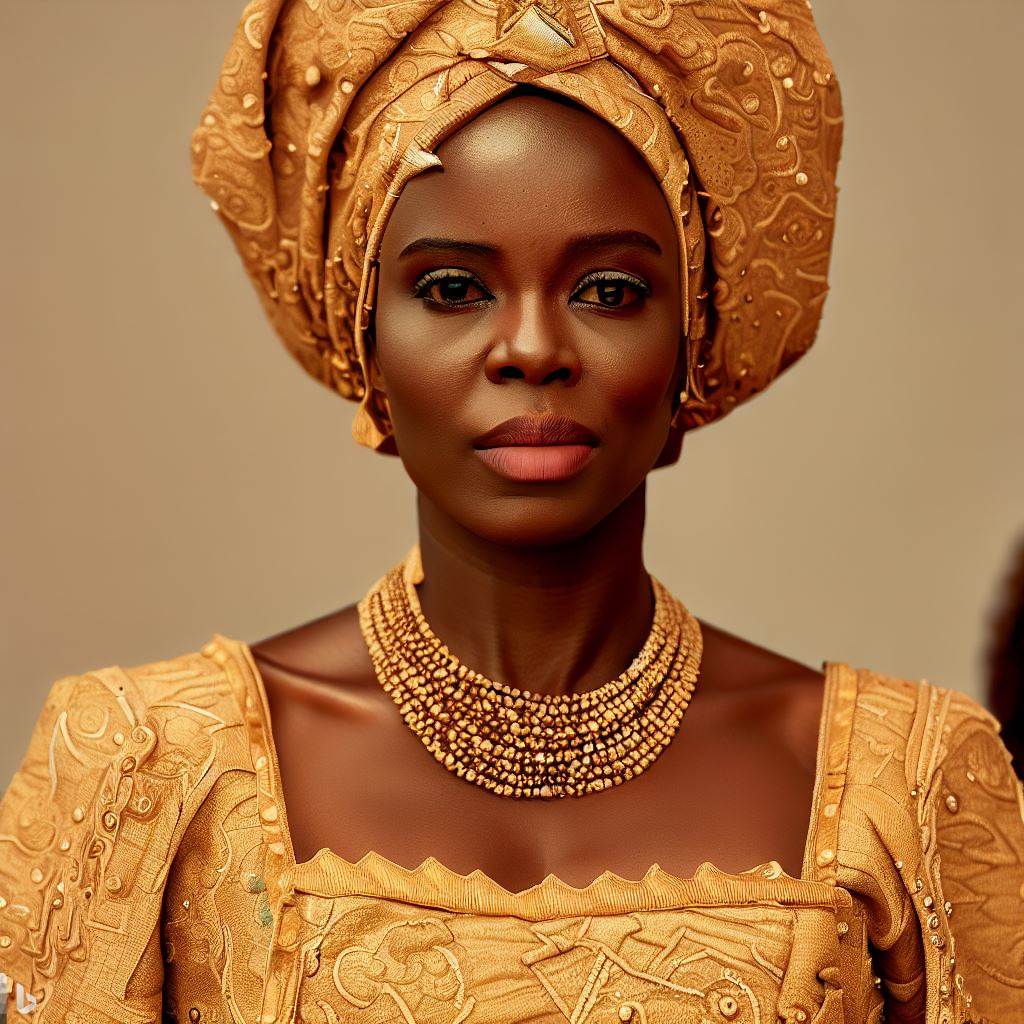
Challenges and Opportunities in Costume Designing in Nigeria’s Film Industry
- Limited budgets and resources: Costume designers in Nigeria’s film industry often face the challenge of working with limited budgets and resources. This can restrict their creativity and limit their ability to create elaborate and authentic costumes.
- Copyright issues and piracy concerns: Another challenge faced by costume designers in Nigeria is the rampant issue of copyright infringement and piracy. Their designs are often copied and sold without their permission or knowledge, leading to financial losses and a lack of protection for their intellectual property.
- Lack of recognition and appreciation: Costume designers in Nigeria’s film industry often struggle with a lack of recognition and appreciation for their work. They are not always given the credit they deserve and are often overlooked in favor of other aspects of the filmmaking process.
- Collaborative opportunities with international productions: Despite the challenges, there are also opportunities for costume designers in Nigeria’s film industry.
the growth of the industry and increased collaborations with international productions, costume designers have the chance to showcase their talent on a global scale.
In summary, costume designing in Nigeria’s film industry comes with its fair share of challenges and opportunities.
Limited budgets and resources can restrict creativity, while copyright issues and piracy concerns pose a threat to the designers’ intellectual property.
Additionally, the lack of recognition and appreciation for their work can be demotivating.
However, the industry’s increasing collaborations with international productions offer costume designers a chance to showcase their talent on a global scale.
Read: A Guide to Event Photography in Nigeria’s Bustling Cities
Contributions of Costume Designing to Nigeria’s Film Industry
Enhancing storytelling and character development
Costume designing in Nigeria’s film industry plays a crucial role in enhancing storytelling and character development.
By carefully selecting and designing costumes, filmmakers can effectively convey the personalities, backgrounds, and motivations of their characters.
- Creating visual identities: The costumes worn by characters help establish their visual identities, allowing the audience to easily distinguish them from one another. This helps in developing a deeper connection with the characters.
- Reflecting social and cultural contexts: Costume designers in Nigeria’s film industry pay close attention to the society and culture in which the story is set. They incorporate elements of traditional attire, modern fashion trends, and regional influences to accurately represent the characters’ backgrounds.
- Signifying character traits: Through costume choices, designers can visually communicate the traits and attributes of the characters. For instance, a powerful and authoritative character might be dressed in regal attire, while a humble and relatable character may be portrayed in more casual clothing.
Boosting the industry’s global recognition
Costume designing also plays a significant role in boosting Nigeria’s film industry’s global recognition.
Well-designed and culturally rich costumes can capture the attention of international audiences, creating a distinct identity for Nigerian cinema.
- Attracting international collaborations: The creative and visually appealing costume designs in Nigerian films attract international collaborations, allowing for a wider reach and exposure to global audiences. This leads to greater recognition and appreciation of the industry on an international scale.
- Showcasing Nigeria’s creative talent: The skill and artistry of Nigerian costume designers are showcased through their unique and innovative designs. This not only promotes Nigerian creativity but also positions the country as a hub for artistic talent.
Job creation and economic impact
Costume designing in the Nigerian film industry contributes significantly to job creation and has a positive economic impact on the country.
- Employment opportunities: The demand for skilled costume designers in the film industry creates job opportunities for individuals with expertise in costume design. This helps to combat unemployment and contributes to the growth of related industries, such as fashion and textiles.
- Local production and manufacturing: The production of costumes for Nigerian films stimulates the local manufacturing sector. This includes sourcing fabrics, accessories, and tailoring services, thereby supporting local businesses and strengthening the economy.
Promoting Nigeria’s cultural heritage and tourism
Costume designing showcases Nigeria’s rich cultural heritage and contributes to promoting tourism in the country.
- Cultural representation: Costumes designed for Nigerian films often incorporate traditional elements, showcasing the country’s diverse cultural heritage. This serves as a visual platform for preserving and promoting Nigeria’s cultural practices and traditions.
- Tourist attractions: The portrayal of Nigeria’s cultural diversity through costumes can inspire tourists to visit the country. They are intrigued to experience the rich cultural tapestry depicted on the screen, leading to increased tourism and revenue for the nation.
In a nutshell, costume designing significantly contributes to Nigeria’s film industry in various ways.
It enhances storytelling and character development, boosts global recognition, creates job opportunities, stimulates the economy, and promotes Nigeria’s cultural heritage and tourism.
The role of costume designers cannot be underestimated in the success of Nigerian cinema.
Read: Photographers’ Rights in Nigeria: Laws and Regulations to Know
Famous Costume Designers in Nigeria’s Film Industry
Profiles and success stories
- Gbemi Olateru-Olagbegi – Started as a fashion designer and made a name for herself in the film industry.
- Uche Nmema – Known for her unique and creative costume designs that enhance character portrayal.
- Yolanda Okereke – Established herself as one of Nigeria’s top costume designers with her attention to detail.
- Yinka Kazeem – Recognized for his versatility in designing costumes for different genres and time periods.
- Adeola Olagunju – Made a mark in the industry with her ability to capture the essence of Nigerian culture.
Notable works and contributions
- Gbemi Olateru-Olagbegi – Created costumes for blockbuster movies like “The Meeting” and “Fifty.”
- Uche Nmema – Designed costumes for critically acclaimed films such as “October 1” and “The Figurine.”
- Yolanda Okereke – Known for her work in movies like “Banana Island Ghost” and “Lara and the Beat.”
- Yinka Kazeem – Contributed to the visual appeal of films such as “King of Boys” and “The CEO.”
- Adeola Olagunju – Showcased her talent in movies like “The Wedding Party” and “The Royal Hibiscus Hotel.”
Their impact on the industry
- These costume designers have revolutionized film fashion in Nigeria’s industry.
- They have elevated the standards of costume design through their exceptional craftsmanship.
- Their work has contributed to the overall visual appeal and success of Nigerian movies.
- They have inspired aspiring costume designers to pursue their passion in the industry.
- These designers have brought Nigerian culture and fashion to the global stage.
These individuals shape Nigeria’s film industry through creativity, dedication, and attention to detail, enriching storytelling through costume design.
Gbemi Olateru-Olagbegi, Uche Nmema, Yolanda Okereke, Yinka Kazeem, and Adeola Olagunju are renowned costume designers who contribute significantly to Nigerian cinema.
They each have a unique profile, with Gbemi Olateru-Olagbegi transitioning from fashion to film, Uche Nmema excelling in unique costume creation, Yolanda Okereke focusing on meticulous details, Yinka Kazeem’s versatile designs spanning genres, and Adeola Olagunju capturing Nigerian culture.
Their works in films like “The Meeting,” “October 1,” “Banana Island Ghost,” “King of Boys,” and “The Wedding Party” have raised industry standards, inspiring aspiring designers while showcasing Nigerian culture globally.
Conclusion
Recap of the importance of costume designing
Costume designing plays a crucial role in bringing authenticity and storytelling to Nigeria’s film industry.
From showcasing cultural heritage to establishing character identities, costumes add depth and visual appeal.
Recap of challenges and opportunities
Costume designers face numerous challenges such as limited budgets, lack of resources, and time constraints.
However, these challenges also present opportunities for creativity, innovation, and collaboration within the industry.
Positive outlook for the future of costume designing in Nigeria’s film industry
The film industry in Nigeria is experiencing remarkable growth and international recognition.
With this growth comes increased demand for high-quality productions, including well-designed costumes.
As the industry continues to expand and evolve, there is immense potential for costume designing to flourish.
With improved funding, training programs, and opportunities for collaboration, costume designers can thrive in Nigeria’s film industry.
The future looks promising as the industry embraces diversity, pushes boundaries, and tells more compelling stories through costumes.

